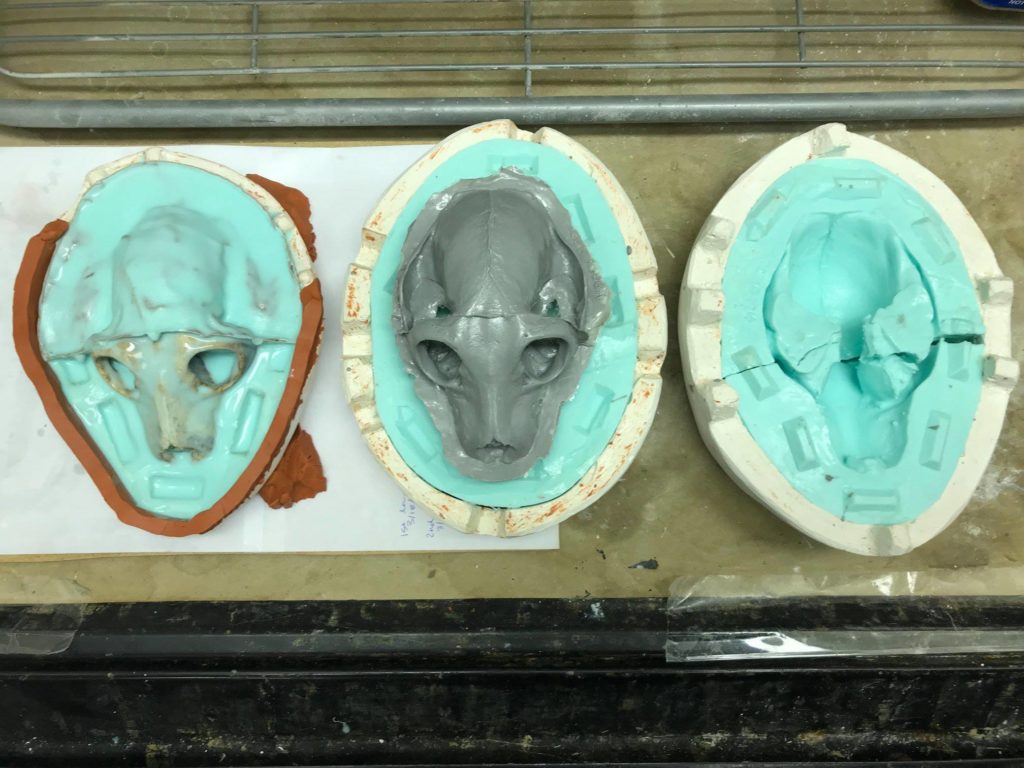
Fossil skull and casts of Babakotia, an extinct sloth-like lemur, from the collection of the DLC’s Division of Fossil Primates.
Happy #FossilFriday! (Or #TGIFF as we say at the Division of Fossil Primates!) Today we’re seeing double as Vicki, our fossil preparator,* finishes a cast of Babakotia, an extinct lemur that was built like a sloth! The name Babakotia comes from the Malagasy word for the indri, a highly endangered modern relative of this extinct sloth-like, leaf-eating primate.
The original, fossil skull of Babakotia is on the left where it is covered in a silicone rubber used to make fossil molds (the green stuff). Vicki is making a second back-up mold of Babakotia, which is why it’s a little green. The first mold is on the right center is the first cast of Babakotia made from the mold. That gray cast is an almost perfect copy of the original specimen. It took several weeks of work to make the complicated, three-part mold, and an entire day of meticulously painting layers of grey resin into the mold to make the final cast.
Now, if something happens to the original specimen, we have a perfect copy of the outside of it. We can also make more casts so we can share the skull of Babakotia with other researchers, museums, educators, and visitors so everyone can can get up close to Babakotia.
A lot of museums put casts on display, disappointing some visitors, but now you know casts are meticulous scientific objects that active researchers can use to understand life in the past!

